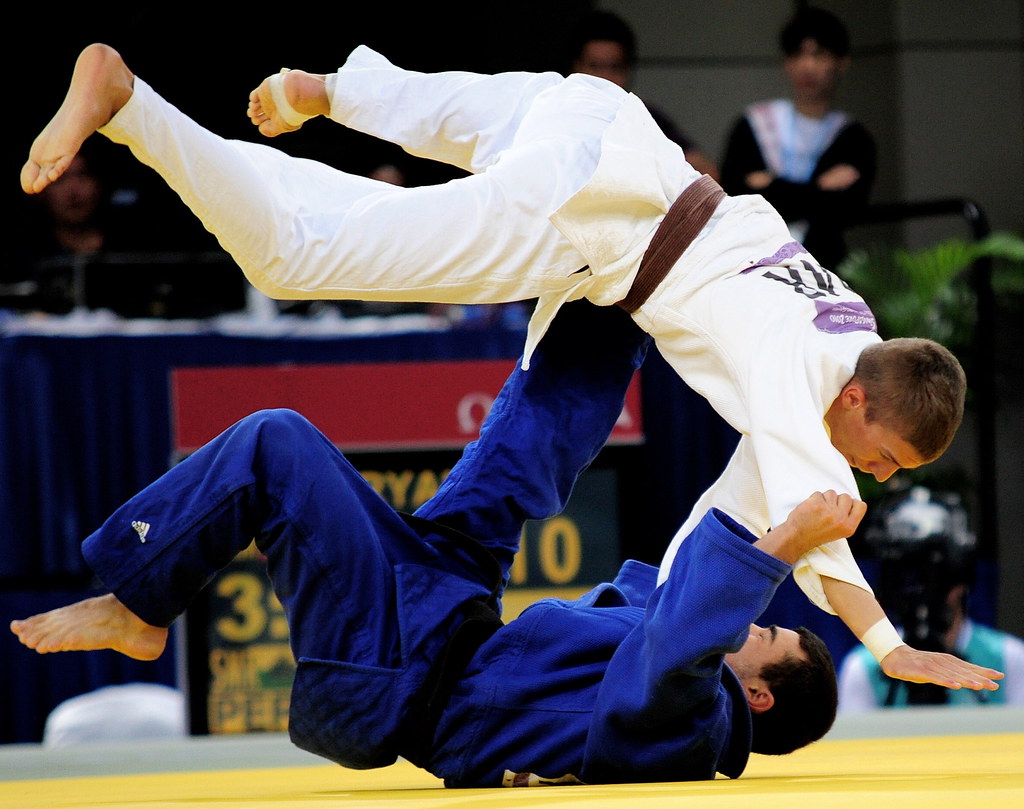Judo: The Gentle Way

Judo is a discipline that involves using grappling and leverage to unbalance the opponent.
Originating from Japan, Judo was founded by Jigoro Kano in 1882. Judo means gentle way. A Judo practitioner is called a Judoka. Famous practitioners include Ronda Rousey, Vladimir Putin, Naomi Watts, Theodore Roosevelt.
Judo is gentle because its techniques use the least amount of force but with maximum leverage. It can also be considered gentle as no throws in Judo are done against the joints of the body. Beginners are often intimidated by seeing people being thrown around and the thumping sound it makes. But actually, a perfect throw in Judo will be the least painful.
History
Jigoro Kano(1860–1938), the founder of Judo, at the age of 14 began boarding at an English medium school. However, things did not go smoothly for him as he was bullied at school. Due to this, he started to seek out a teacher of Jujutsu.
Finding a teacher of Jujutsu wasn’t easy because after the Meiji restoration Jujutsu became unpopular. Many teachers, who knew the art were not willing to teach because they thought it was useless and some were forced to pursue alternative jobs. Several years passed before he found a willing teacher (Fukuda Hachinosuke). From then onwards, he practiced under many Jujutsu teachers. Finally, in 1882, Jigoro Kano established Judo.
Not only did Jigoro Kano establish Judo, he also saved Jujutsu from extinction. It was due to him Jujutsu gained its popularity when it was supposed to die out.
Practice
A Judo practice place is called Dojo. There are 6 groups of techniques in Judo.
- Nage-waza (67 throwing techniques)
- Te-waza (hand throws)
- Koshi-waza (hip throws)
- Ashi-waza (foot sweeps)
- Sutemi-waza (sacrifice throws)
- Katame-waza (grappling techniques)
- Osaekomi-waza (pins)
- Shime-waza (chokes)
- Kansetsu-waza (joint locks)
- Ukemi (break fall techniques)
- Atemi-waza (body striking techniques; not practiced in most dojos)
- Uke-waza (blocks; not practiced in most dojos)
- Kappo (reviving techniques)
These are some of my favorite techniques-
Sparring in Judo is called Randori. There exists some pre-arranged sequence of movements that includes throws and grappling called Kata. Judo Katas are performed in a group of 2. The thrower is called Tori and the person on whom it is performed is called Uke. There are ten Kata officially recognized by Kodokan. The most popular Kata is the Nage-no-Kata.
Ranking
Judo students wear belts called Obi that come in different colors. Colored belts determine a practitioners skill level and rank. Judo is the first martial art that incorporated a ranking system using colored belts. Other martial arts like Karate have adopted this system. There are 10 levels of colored belts (Kyu) and 10 levels of black belts (Dan). To get promoted to the next rank, a student has to attain a certain skill level and pass an exam. The exams are usually held at an interval of 3-4 months.
White - 10th Kyu
Yellow - 9th Kyu
Orange - 8th Kyu
Red - 7th Kyu
Green - 6th Kyu
Purple - 5th Kyu
Blue - 4th Kyu
Brown(1) - 3rd Kyu
Brown(2) - 2nd Kyu
Brown(3) - 1st Kyu
Black - 1st Dan to 10th Dan
Not all dojos follow the exact ranking. Some dojos may add/remove some colors or reorder the existing ones.
Personal opinions
Judo is a martial art that exercises the entire body equally. In other martial arts, when you’re punching your arms improve. When you’re kicking your legs improve. But in Judo, each technique that you do requires the entire body to work. So if you want a complete body workout, consider learning Judo.
Judo is also very friendly for beginners who are big in size and have a weight advantage over others. If you don’t like to move around as much, get started with Judo. You can get to throw around your opponent using strength and with minimal movement. Of course, as you advance you need to get moving more but you’ll enjoy using your size and strength to throw other people.
Judo has some of the best collection of throws and effective ones as well among the martial arts. Not only are they effective but they are very safe as well for practice. There’s no reason to get scared if you are a starter.
Since judo is all about throws and grappling you may not enjoy it in the beginning if you are a skinny person. You’ll have a slight weight and strength disadvantage. Also, if you prefer punching and kicking and a bit of aggressiveness, then you might enjoy other martial arts more.
Judo is good enough if you want to learn self-defense. Throws and grappling are more effective in street fights rather than punches and kicks. Learning Judo will help you develop the confidence and skills required for self-defense.
Sharing is caring!